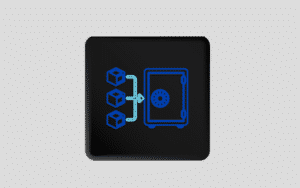The simple moving average (SMA) is a technical indicator that shows the average price of a security over a particular period. As the name suggests, the average price “moves.” As new data emerge, the previous ones are dropped — subsequently, the average price changes along a time scale.
Just like the other types of moving averages, the SMA smoothes out erratic price movements to show the actual trend. The indicator offers buy/sell signals to traders by identifying an asset’s support and resistance price levels. Subsequently, one is able to determine the point at which he needs to enter or exit a trade.
How to calculate the simple moving average
To obtain an SMA, you need to add the closing price of an asset for several time periods and then divide the total by the used periods. For instance, if you are using a 2-hour chart, you can decide to use five periods. Closing prices are suitable in the calculation since they summarize the price action and market sentiment during a specific period.
Let’s assume that the closing prices of these time periods are $30.10, $31.03, $31.10, $31.05, and $31.11. In this case, the total for the 10-hour period (2 hours* 5) will be $154.39. To get the SMA, you will need to divide $154.39 by 5, which is $30.88.
As new data comes in, you will need to drop the earliest price in the initial SMA and include the most recent price to get a valid average. This is the reason behind the term moving average.
Example of a simple moving average
The image above is a EUR/USD daily chart with a 25-day (denoted by a yellow line) and a 50-day (denoted by a blue line) SMA. You will notice that the SMA with a longer period (50 days) is farther from the current price compared to the one with a shorter time frame (25 days). This is because of the longer the SMA’s time frame, the slower the indicator’s reaction to the asset’s price movement.
How to use the simple moving average
As an analytical tool, the SMA is helpful in identifying a price trend and the probability of it changing. It is one of the easiest ways of determining if the price of a security is on an upward or downward trend. If the asset’s price is above the SMA, it denotes increasing demand; hence the uptrend is likely to continue. On the other hand, prices that appear below the SMA are a bearish sign.
One can also use 2 SMAs instead of one to confirm a trend in the market. In this case, the averages should be of different time frames. For instance, you can use the 50-day and 200-day SMAs to compare the medium and long-term trends of a security’s price. Moving averages with a shorter period (5-20 days) are appropriate for short-term investors, while those with a longer time frame are suitable for long-term trading.
Notably, a short-term average (usually the 50-day SMA) can cross and move below a long-term average (200-day SMA). This is a bearish signal that indicates the possibility of a downward trend. Similarly, when the SMA with a shorter period moves above that of a longer timeframe, it denotes potential gains.



